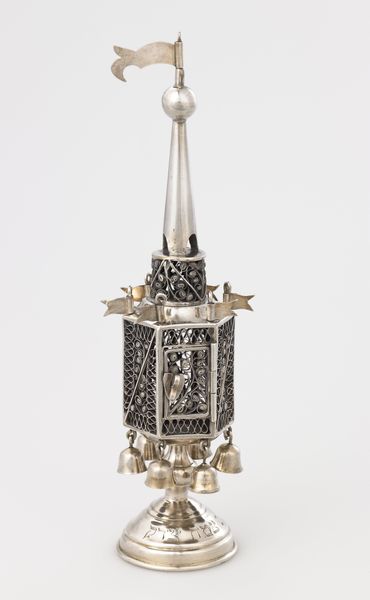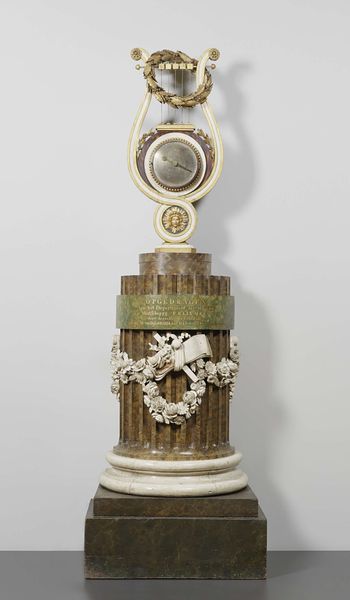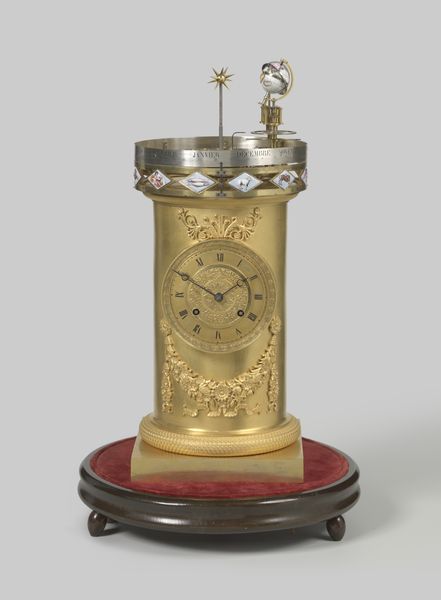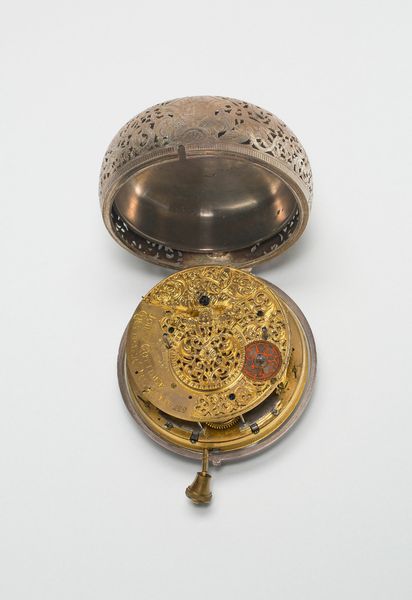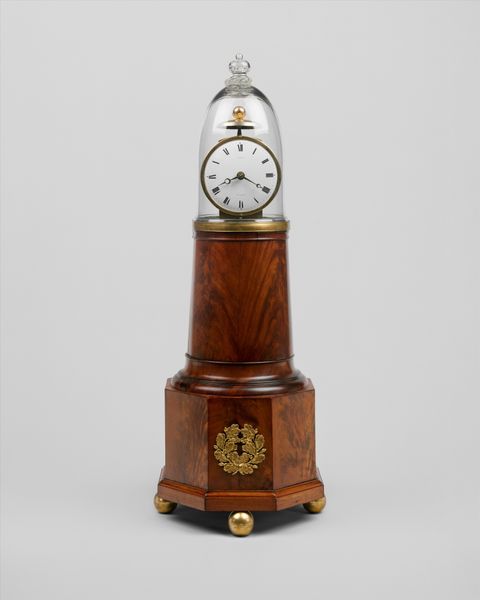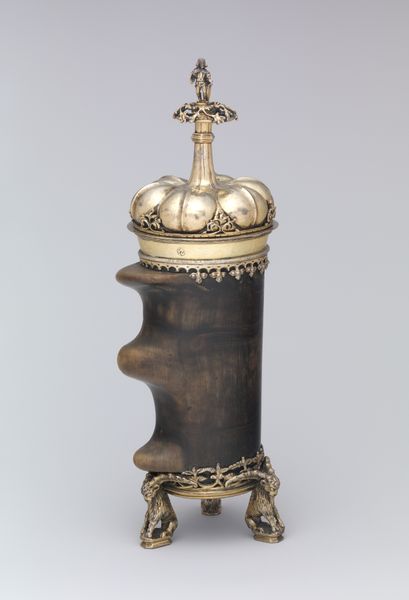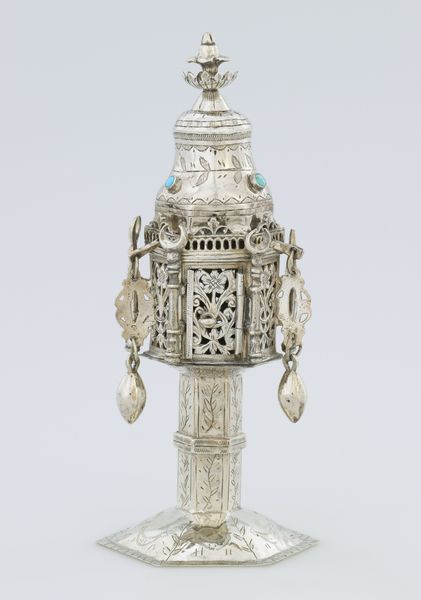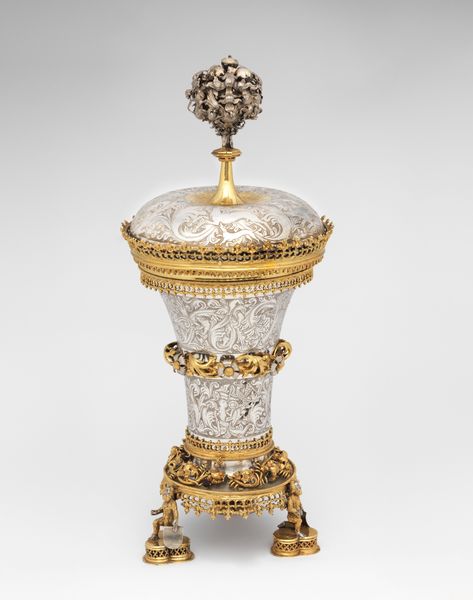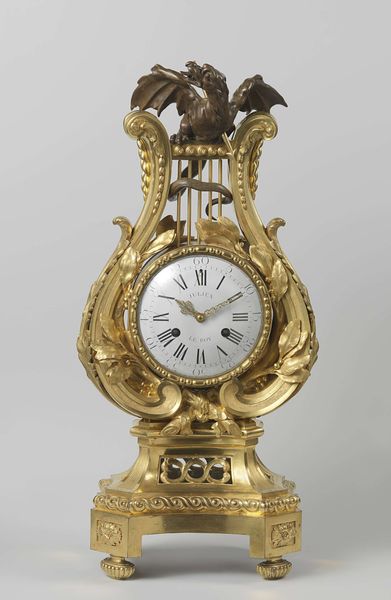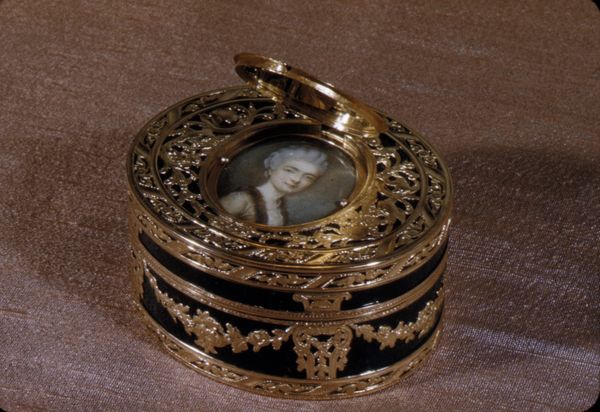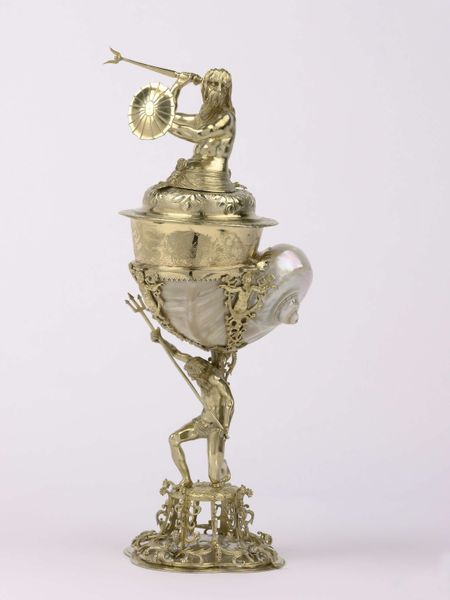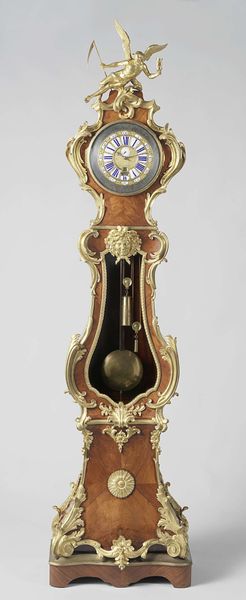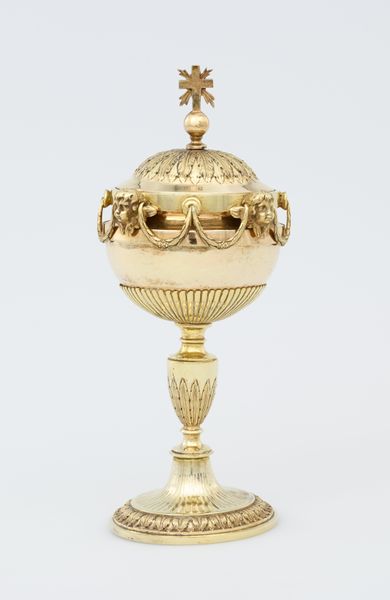
Combination Clock-Compass-Thermometer-Barometer c. 19th century
0:00
0:00
brass, metal, sculpture, enamel
#
brass
#
metal
#
sculpture
#
enamel
#
decorative-art
Copyright: Public Domain
Editor: Here we have what’s called a "Combination Clock-Compass-Thermometer-Barometer," dating back to the 19th century. It is crafted from brass, metal and enamel, and is currently located at the Minneapolis Institute of Art. With its detailed craftsmanship, it almost feels like something from a steampunk novel! I am intrigued by the intricate function it could have. What is your view of this piece, perhaps in the context of its time? Curator: I see it as a powerful statement of 19th-century values, where scientific advancement intertwined with aesthetics. The combination of instruments speaks to a society eager to measure, predict, and control its environment, particularly, given the anchor detail, relating to oceanic conditions. Note the use of brass and enamel – precious materials signaling wealth and status. In what context do you believe this sort of ornament would have been visible? Editor: Perhaps displayed in a wealthy merchant’s home or a ship owner's office, as a status symbol representing their global reach and engagement with trade. Do you think objects like this also shaped the public perception and acceptance of science during the time? Curator: Precisely! Objects like this, showcased in parlors and offices, presented science as not only useful but also beautiful and luxurious, subtly influencing its acceptance among the elite. It bridges the gap between pure science and social display, shaping a narrative of progress intertwined with power. Were these ‘scientific’ measurement features also intended to entertain, as well? Editor: I can see that; they probably offered conversation points and a way to subtly demonstrate one's worldliness and knowledge, it seems. Thank you; I've never considered the decorative arts as being powerful vectors that popularized science as both approachable and a social currency! Curator: And I’m now thinking about how instruments, not just paintings, played a crucial role in shaping a public image of science itself, a perspective often overlooked.
Comments
No comments
Be the first to comment and join the conversation on the ultimate creative platform.
